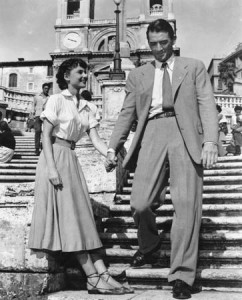Newsweek’s Sarah Ball Discovers Travel Trend in Film

We were recently tipped off to an Italian travel film trend uncovered by Newsweek’s Sarah Ball. Here’s an excerpt from her fantastic findings.
Used to be, summers were for travel. Now they’re for travel movies—ones that assiduously indulge us right here, in the air conditioning, in a reclinable velour chair, with a 64-ounce beverage. And this summer, we’re going to Italy.
In May’s Letters to Juliet, Amanda Seyfried is Sophie, a sad fact checker for The New Yorker who flees to Verona.In June’s I Am Love, Tilda Swinton is a sad mother who flees to San Remo’s rural hills. And in August’s Eat Pray Love, Julia Roberts is a sad divorcée who treks, firstly, to Rome.
We’ve been to all these places before, of course. Because if the Italian love story is usually the adulterous kind—Seyfried kisses a boy who’s not her boy; Swinton bags a man who’s not her man—the folklore of these films is deeply faithful.
To wit: our modern living rooms bear no resemblance to the Edwardian parlors of E. M. Forster’s A Room With a View, but the formula of Letters to Juliet—a PG movie for Seventeen readers—is Forster’s, nearly untouched. Bookish, betrothed girl sneaks snog with blond English chap under Italian moon.
More than a half century stretches between Roman Holiday (1953) and director Luca Guadagnino’s I Am Love, and yet the two films share the exact same scene: the ladies (Audrey Hepburn and Swinton) get their hair whacked into gamine Euro-cuts, the symbol of womanhood unshackled. The similarities are understandable, considering their common source.
For Forster, or Henry James, or Nathaniel Hawthorne, the Italian romantic novel was a shunning of the 19th and early 20th century’s twin specialties—social repression and smoggy industrialization. Stationed in Liverpool in the 1850s, Hawthorne wrinkled his nose at the “smoky, noisy, dirty, pestilential” landscape to which he was chained, serving out a consular position. He promptly borrowed Rome’s glorious scenery for his next book, 1860’s The Marble Faun—today considered something of a Baedeker for bookworms.
Modern Roman romps appear most during periods of social or political distress. The notion of “escape,” whether to Italy or Oz, is predicated on fleeing a version of hell—in these tales, a kind of vague Sad White Lady–istan, or its neighboring province, Brooklyn.
A dour homeland is defined by political pall, as in Enchanted April, where the women flee interwar England, or internal conflict, as in Eat Pray Love, in which Elizabeth Gilbert escapes divorce, depression, and suicidal thoughts. Heaven is the place of lightness, and also hand-pressed olive oil.
To read the rest of the article or click through the accompanying gallery, Rome on here.





June 24, 2011 @ 10:12 pm
I wanted to create you this tiny note to be able to say thanks a lot the moment again on the extraordinary advice you have provided in this article. It was quite unbelievably generous of you to deliver extensively precisely what numerous people would’ve supplied as an electronic book to end up making some money for themselves, especially now that you might have done it if you ever considered necessary. These secrets in addition worked to become easy way to be certain that other individuals have the identical dream just like my personal own to figure out lots more with respect to this condition. I’m certain there are millions of more pleasurable periods in the future for those who discover your blog.
July 26, 2011 @ 1:45 pm
This is an awesome post here